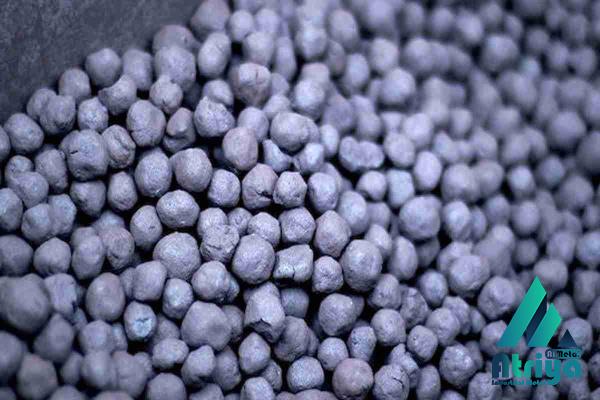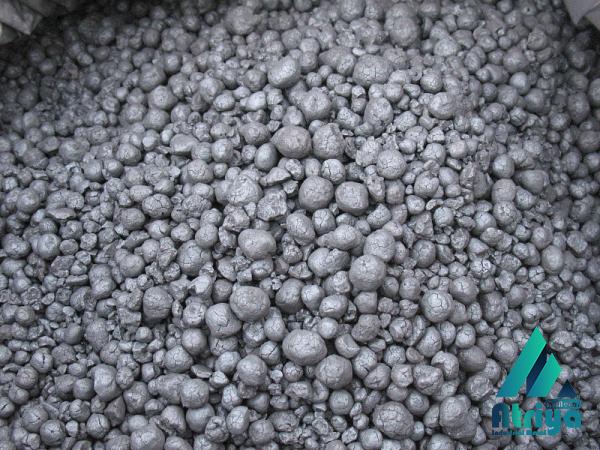Sponge iron, also known as direct reduced iron (DRI), is a metallic iron product produced through the direct reduction of iron ore in the presence of reducing agents such as natural gas or coal. The sponge iron plant plays a significant role in the iron and steel industry, allowing for the production of high-quality iron at a lower cost compared to traditional methods. This article provides an in-depth overview of the sponge iron plant, its production process, and its wide range of applications in various industries. I. Production Process of Sponge Iron: 1. Raw Material Preparation: – Iron ore: Selecting the right type and quality of iron ore is crucial, as it directly impacts the quality of the sponge iron produced. – Coal: Coal or coke is used as a reducing agent to convert iron ore into sponge iron. It provides the necessary heat and carbon for the reduction process. 2. Iron Ore Reduction: – The iron ore is ground and dried before being fed into a rotary kiln, which operates at temperatures of around 1100 to 1200 degrees Celsius. – During the reduction process, carbon monoxide (CO) is generated from the coal, which reacts with the iron oxide in the ore, reducing it to metallic iron.
iron
 – The reduced iron particles, in the form of solid DRI, are discharged from the kiln and undergo cooling, screening, and magnetic separation to remove any impurities. 3. Briquetting and Packaging: – The sponge iron is compressed into briquettes to improve handling, transportation, and storage. – After briquetting, the sponge iron is packaged in suitable containers, such as bags or containers, and transported to steel mills for further processing. II. Advantages and Applications of Sponge Iron: 1. Cost-Effective Production: – Sponge iron plants offer a cost-effective alternative to the traditional Blast Furnace- Basic Oxygen Furnace (BF-BOF) process, as they do not require expensive coking coal or large-scale infrastructure. – The reduced iron produced by sponge iron plants is of high purity and can be directly fed into electric arc furnaces for steel production, eliminating the need for an intermediate step of converting iron ore into pig iron. 2. Steel Production: – Sponge iron is a vital feed material in electric arc furnaces (EAF) used for steelmaking. It acts as a substitute for the traditional iron ore and coke used in the BF-BOF process.
– The reduced iron particles, in the form of solid DRI, are discharged from the kiln and undergo cooling, screening, and magnetic separation to remove any impurities. 3. Briquetting and Packaging: – The sponge iron is compressed into briquettes to improve handling, transportation, and storage. – After briquetting, the sponge iron is packaged in suitable containers, such as bags or containers, and transported to steel mills for further processing. II. Advantages and Applications of Sponge Iron: 1. Cost-Effective Production: – Sponge iron plants offer a cost-effective alternative to the traditional Blast Furnace- Basic Oxygen Furnace (BF-BOF) process, as they do not require expensive coking coal or large-scale infrastructure. – The reduced iron produced by sponge iron plants is of high purity and can be directly fed into electric arc furnaces for steel production, eliminating the need for an intermediate step of converting iron ore into pig iron. 2. Steel Production: – Sponge iron is a vital feed material in electric arc furnaces (EAF) used for steelmaking. It acts as a substitute for the traditional iron ore and coke used in the BF-BOF process.
Specifications of iron
 – The use of sponge iron allows for flexibility in the steel production process, as it can be easily adjusted to meet specific steel grade requirements. – Sponge iron also contributes to energy savings in the EAF process due to its higher iron content and lower impurities compared to scrap metal. 3. Alloy Manufacturing: – Sponge iron is widely used in the manufacturing of various alloys such as stainless steel, tool steel, and alloy steel. – The controlled carbon content in sponge iron makes it an ideal raw material for producing high-quality alloys with the desired mechanical, thermal, and chemical properties. 4. Automotive Industry: – Sponge iron finds application in the automotive industry, particularly in the production of engine components, such as crankshafts, camshafts, and gears. – The high purity and superior metallurgical properties of sponge iron contribute to the enhanced strength, durability, and performance of automotive parts. 5. Construction Sector: – Sponge iron is utilized in the construction sector for manufacturing reinforced steel bars, commonly known as TMT bars.
– The use of sponge iron allows for flexibility in the steel production process, as it can be easily adjusted to meet specific steel grade requirements. – Sponge iron also contributes to energy savings in the EAF process due to its higher iron content and lower impurities compared to scrap metal. 3. Alloy Manufacturing: – Sponge iron is widely used in the manufacturing of various alloys such as stainless steel, tool steel, and alloy steel. – The controlled carbon content in sponge iron makes it an ideal raw material for producing high-quality alloys with the desired mechanical, thermal, and chemical properties. 4. Automotive Industry: – Sponge iron finds application in the automotive industry, particularly in the production of engine components, such as crankshafts, camshafts, and gears. – The high purity and superior metallurgical properties of sponge iron contribute to the enhanced strength, durability, and performance of automotive parts. 5. Construction Sector: – Sponge iron is utilized in the construction sector for manufacturing reinforced steel bars, commonly known as TMT bars.
buy iron
 – These bars possess superior tensile strength, ductility, and resistance to corrosion, making them ideal for various construction applications, including bridges, buildings, and infrastructure projects. 6. Other Applications: – Sponge iron has diverse applications in sectors such as railways, defense, power transmission, and manufacturing of machinery and equipment. – It serves as a crucial raw material for the production of iron powders, which are used in powder metallurgy, surface coating, and additive manufacturing processes. Conclusion: The sponge iron plant plays a crucial role in the iron and steel industry by providing a cost-effective and efficient method of producing high-quality iron. The production process involves the direct reduction of iron ore in the presence of reducing agents, resulting in the formation of sponge iron, which can be utilized in numerous applications, including steel production, alloy manufacturing, automotive industry, and construction sector. The widespread use of sponge iron contributes to the overall development of various industries, offering economic and environmental benefits through resource optimization, reduced waste generation, and energy savings. With continuous advancements in technology and process optimization, the sponge iron plant is expected to witness further growth and serve as a significant player in the global iron and steel market.
– These bars possess superior tensile strength, ductility, and resistance to corrosion, making them ideal for various construction applications, including bridges, buildings, and infrastructure projects. 6. Other Applications: – Sponge iron has diverse applications in sectors such as railways, defense, power transmission, and manufacturing of machinery and equipment. – It serves as a crucial raw material for the production of iron powders, which are used in powder metallurgy, surface coating, and additive manufacturing processes. Conclusion: The sponge iron plant plays a crucial role in the iron and steel industry by providing a cost-effective and efficient method of producing high-quality iron. The production process involves the direct reduction of iron ore in the presence of reducing agents, resulting in the formation of sponge iron, which can be utilized in numerous applications, including steel production, alloy manufacturing, automotive industry, and construction sector. The widespread use of sponge iron contributes to the overall development of various industries, offering economic and environmental benefits through resource optimization, reduced waste generation, and energy savings. With continuous advancements in technology and process optimization, the sponge iron plant is expected to witness further growth and serve as a significant player in the global iron and steel market.











Your comment submitted.